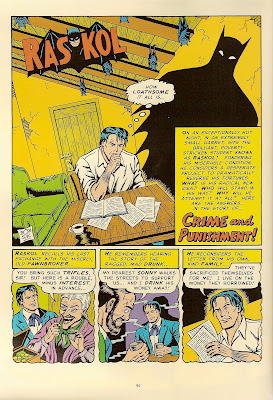NaNoWriMo Tip #6: A No-Fail Formula To Storyboard Your Novel
You
know how when a movie comes out, especially a children’s or superhero flick,
short book versions appear on the shelves at the supermarket. These are short
story versions of the movie, often illustrated with film shots. If you’re
lucky, the writing is adequate, but seldom inspired. However, these books are
instructive in how to reduce a two hour movie, or a novel length story, to a
ten page short story. The shorter the book, the more it skips large subplots
and tells the story only in broad sweeps.
Writing
your novel in short story form can be enormously helpful in making sure that
you have an entire story arc.
You
should already know the ending of your story. It’s more important to know where
your story will end than where it will begin. It’s a mistake to sweat over the
first scene, or worse, first sentence of your book, when you don’t even know
what the rest of the story is going to go.
Once
you a have an ending, though, you can work backwards and ask yourself, “If the
hero achieves Outer Goal X by the end, what inner transformation did he have to
make since the beginning of the book?” That will show you where to start your
story. At the beginning of the book, the hero should not yet be the kind of
person capable of achieving his outer goal, because he’s not yet undergone his
inner transformation.
Knowing
the ending should also give you a clue about the theme of the book. One way to
test this is to see if you can trace an arc in a short story. Write a one-page
story or synopsis (you can think of it either way) of your entire book that
shows the key transformations of your character.
This
will help you write a back blurb for your story, but there’s an important
difference. The blurb on the back of the book should not include spoilers for
major plot points. Of course it cannot tell the reader the ending. When you
write a short story version or synopsis of your novel, you need to include the
major plot twists and the ending. If you are writing a mystery, you need to
reveal the killer and the major clues that the detective found to unmask him.
If
you need a prompt to write the short story, here’s one in fairy tale form (this
doesn’t mean you have be writing a fantasy).
Once upon a time there was
a hero (farmboy, housewife, spy…) named
______ who wanted more than anything to ______.
But the problem was that
______.
Then one day, something
new happened and ______.
So the hero went/met/tried
a place/person/thing______.
But this didn’t work
because ______.
So the hero went/met/tried
another place/person/thing ______.
But this didn’t work
because ______.
And all seemed lost until
the hero ______.
Finally, the hero went/met/tried
a third place/person/thing ______.
And the hero succeeded (or failed)
because ______.
Therefore at last the hero
was able to ________.
Any
story reduced to this will seem formulaic, but once you add in your character
development, your worldbuilding, your subplots, your themes and symbols, your
further twists and turns, it needn’t be predictable at all. Yet if you try to
write a story without at least some solid backbone of a story arc, your story
will be a shapeless mass no matter how great your characters and how subtle
your writing. Could Shakespeare or Dostoevsky be put into this formula? Yes.
I’ve the comic book versions of classic literature to prove it. So don’t turn
your nose up at this method!
The
Comic Classics reminds me of other ways to approach this. If you enjoy drawing,
or don’t mind playing with stick figures, you can actually do a comic or
storyboard of your novel. If you can’t draw, you can grab pics from around the net
(as long as you don’t use this for anything but your own purposes—you can’t
sell it unless the pics are royalty free) and use those in your storyboard.
Either way, it’s fun, but it does take time.
As proof, or at least as amusement, let's take a look at a bit of Fyodor Dostoyevsky's Crime and Punishment, envisioned as a Batman comic strip. If you've read Crime and Punishment, and of course you have, you'll see how succinctly the comic condenses the main storyline. In the novel, Marmelodov isn't run over until Chapter 14; here's it's on Page 4. (The fact that Sonia / "Sonny" is a whore is also skimmed over, but that's because the comic was intended for innocent minds, which could handle ax murder but not prostitution.) Obviously, a lot of the subplots have been left out of the comic, and a few changes of clothes have been added, but even with these elisions and wardrobe revisions, a surprising amount of Russian angst shines through. Just think if Christopher Nolan had decided to go with Dostoyevsky to write the "real" Batman's backstory!
Can you fit Crime and Punishment into the No Fail fairytale form? Indeed you can; easily. (Try it for fun!) Also a simple rule of thumb is that if the hero succeeds at the end, story is heroic or comic; if he fails it's tragic. As part of deciding your ending, you should already know if your story will be be heroic, comic or tragic.






Comments
I haven't done a story board for my novel, but I am creating a scrapbook of the story. I plan to post pictures of the scrapbook once it's finished. Well, I may give some previews in a couple of weeks. Maybe.
Thanks for these tips. I have enjoyed them:)